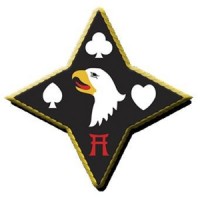Written by Spc. Michael Vanpool
101st Sustainment Brigade, 101st Airborne Division (AA) Public Affairs


Helmand Province, Afghanistan – Gun trucks, a wretch, and distribution and recovery vehicles precisely outline a formation of soldiers in the motorpool.
“This all represents the distribution fight, our ability to move supplies down the road and to support the fight as a combat sustainment support battalion,” said Command Sgt. Maj. John Seelhorst, command sergeant major of the 129th Combat Sustainment Support Battalion.
The soldiers of the 129th CSSB, 101st Sustainment Brigade, attached to the 7th Sustainment Brigade for their deployment, stand inside the formation of vehicles as the battalion transferred authority of its mission to the 375th CSSB, a reserve unit from Mobile, AL, at Camp Leatherneck October 12th.

The command and staff of the battalion worked closely with these units to make sure they had everything they needed to continue the fight. “The success of the battalion lied heavily with building relationships,” said Lt. Col. Daniel Rickleff, the commander of the 129th. “We briefed this continuously, building relationships.”
The headquarters company built relationships within their own battalion as they took command over a mixture of units, from active duty, the reserves and the National Guard, that converged here from Alaska to Germany. The command team and staff worked to bring the units together as one team.
“Given that we don’t deploy organically as CSS elements, we bring together units that are diverse,” Seelhorst said. “We’ve been able to take these elements and bring them together, the staff supported the units and the units supported the staff.”
As barbecues and events raged on at Leatherneck to bring the battalion together, the soldiers would venture outside the wire to drive the routes and resupply forces. The roads in Helmand and Kandahar provinces are paved in the some of the most dangerous areas in the country.
Rickleff said he and his team worked to guarantee the best non-commissioned officers were in charge of the convoys. They enacted rigorous testing and grilled the NCOs in boards to make sure each convoy commander would make the best decision for the soldiers following them.
Along the roads these soldiers traveled, the 129th mentored Afghan National Security Forces partners. They “taught their soldiers the basics of providing logistical support and further enhanced their ability to be self-sustaining,” he said.
The partnerships with the local forces on the routes added to the security of the soldiers driving with supplies and cargo, he said.
Aside from partnerships with the local security forces, the battalion began a new agreement with the local truck drivers and businesses. The Afghan Trucking Network hires local Afghans to move supplies from base to base without the need for convoy security teams.
Rickleff said the battalion did not limit themselves to conventional sustainment operations. “We established an aggressive approach to the expansion of the Afghan Trucking Network, supporting locally owned, elder-owned trucking companies,” he said.
The new initiatives, mixture of companies and continued distribution fight are now inherited by the 375th CSSB as they began their mission here, he said.
“How do we set up success for the 375th, that’s our legacy,” Rickleff said. “Our legacy is setting the conditions for building a successful CSSB.”
The battalion is now preparing for their journey back to Fort Campbell, closing another chapter in the history of the battalion.
“I believe this battalion accomplished everything we were supposed to do and more,” Seelhorst said. “And it’s all due to the 700 or some troopers. It has nothing to do with anything except that, their resiliency and their willingness to serve this country.”


